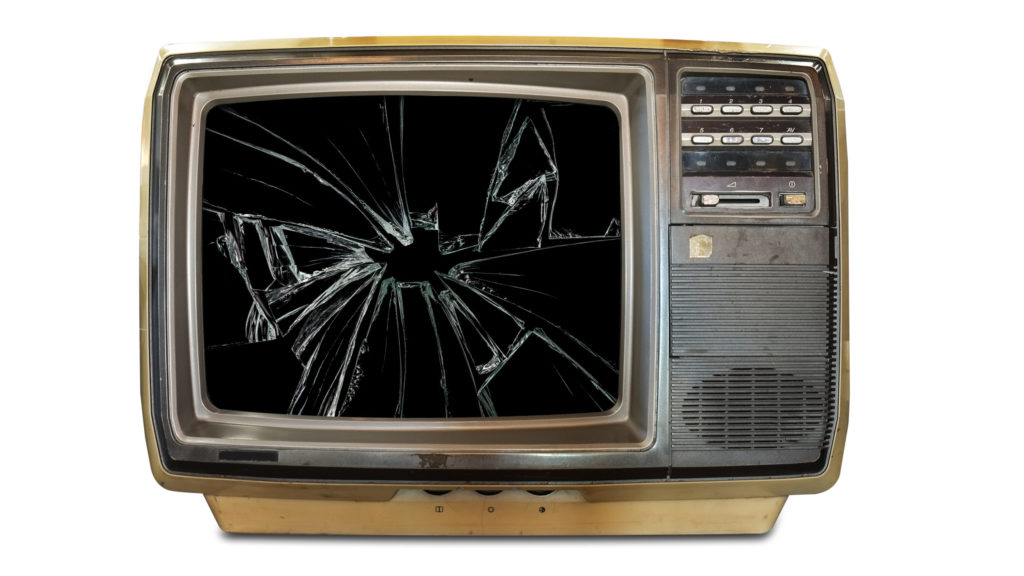If you are of a certain age, it is most likely you can still remember certain major TV events: When the Beatles first appeared on the “Ed Sullivan Show.” The last episode of “M*A*S*H.” When Sammy Davis Jr. planted a wet one on Archie in “All in the Family.” You can recall favorite episodes of “The Twilight Zone,” and if you only mention the theme (“To Serve Humans”), your friends of a similar age will know it.
Network television, even when it was being critiqued as a “vast wasteland,” was one of the ties that bound us together as a nation. From the cultured to the crass, its programming was watched by huge percentages of the population, and back when we gathered around water coolers, it was relatively easy to predict what shows we were going to be talking about on Monday morning.
No more. What now streams over not just our TV sets but our laptops and phones is an endless flood of visual treats and distractions: From YouTube and TikTok to streaming services like Netflix and Hulu to traditional cable and, for the fewer and fewer of us who still watch it, network television as well.
There is in fact a new conversation ritual. At some point the talk turns to inquiring what we might be watching in common, be it “The Golden Bachelor” or “Shetland” or “Game of Thrones.” We use these conversations as a kind of geolocator for where this friend or potential friend might fall in terms of cultural interests, the same way we use Fox or CNN or MSNBC to geolocate their political leanings.
This plethora of entertainment — some of it of high quality and increasingly international in nature — is one reason this is being labeled the “golden age” of television.
But Robert David Sullivan begs to differ. In a fascinating commentary in the January issue of America magazine, Sullivan takes issue with the assertion. He argues that the fragmentation of channels, this multiverse of platforms, is perhaps both cause and symptom of our increasing fragmentation as a society.
“Entertainment and culture, like politics, has become as balkanized as supermarkets with dozens of brands of bottled water,” he wrote.
He particularly focuses on “prestige TV,” often trendy HBO shows like “The Sopranos” and “Succession,” that featured, in his words, “narcissistic and even psychotic men ruining the lives of everyone around them.” Many other prestige shows come to mind in this category: “House of Cards.” “Dexter.” “Breaking Bad.”
One symptom of this trend was the “self-segregation of elitist viewers,” Sullivan said. Elites were not finding their “prestige television” in a network-aired play or a Leonard Bernstein concert, but “terrible-people” melodramas. Meanwhile, other parts of the audience drifted off to one of the endless shows produced by Dick Wolf, usually involving formulaic plots, terse dialogue, and body counts. Or they turn to “reality shows,” which are anything but.
High culture has been relegated to public broadcasting, where another sliver of the population can still find operas, plays, and serious documentaries. Yet this audience is a fraction of the one that watched Margot Fonteyn and Rudolph Nureyev on a variety show like “Ed Sullivan,” the same show that also introduced us to The Beatles.
Sullivan concedes that television has gotten more diverse. We’ve grown beyond “The Jeffersons” and “The Cosby Show,” and that is a good thing. At the same time, lacking a shared viewing space, shows featuring this diversity are less likely to reach very far beyond their target ethnic audience.
“For just about anyone,” Sullivan wrote, “there are now more shows on television that reflect your own life; the trade-off may be that there is nothing that reflects our common life, or addresses our common concerns.”
Perhaps this fragmentation of television audiences simply reflects our own fragmentation. Perhaps it reflects trends in marketing, in which ad agencies want a specific demographic slice, and are willing to pay handsomely for that slice.
There may be one other corrosive trend at work: that playing to our fears, our cynicism, and our baser instincts is more profitable and easier to attract audiences with short attention spans and a distrust of almost everything. Shadowy conspiracies, corrupt higher-ups, remorseless villains deserving of a remorseless response (all exemplified in Prime Video’s hit “Reacher” series) feed our cynicism.
In fact, our public square, our shared space, is larded with cynicism. We have fewer heroes and more villains, dupes and lone rangers who, in Wayne LaPierre’s cynical motto, see themselves as a good guy with a gun stopping loads of bad guys with guns.
This may be all that functions as our “common conversation” today, both reflecting our fractured and distrustful culture and feeding it. I can only hope that we will soon weary of this darkness and seek to recover a shared digital space that will speak to our better angels.

